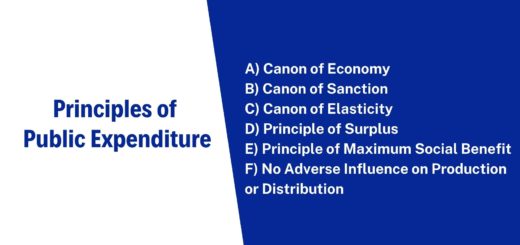Standard Costing – Material Variance | Free Cost Accounting Articles
Table of Contents
Standard Costing
Meaning of Standard Costing
Standard costing is a perfect system of controlling costs and measuring efficiency and development. It is a technique of cost reduction and cost control. It helps to provide valuable guidance in several management functions, such as formulating policies, determining price levels, etc. The essence of standard costing is to set objectives and targets to achieve them and to compare the actual costs with these targets. Standard Costing is used to ascertain the standard cost under each cost element, i.e., materials, labor, and overhead. It can eliminate all kinds of waste. Through the application of this costing, it can be ascertained whether or not the production activities are going on according to the pre-determined plan.
You learn many topics of accounting from our YouTube channel TYBCOM SCHOLARSZILLA
Definition of Standard Costing
• A standard costing system is a method of cost accounting in which standard costs are used in recording a certain transaction, and the actual costs are compared with the standard cost to learn the amount and reason for variations from the standard.
‐ W.B. Lawrence
Standard costing involves the preparation of costs based on pre-determined standards and continuous comparison of actual costs with them for guidance and control.
‐ D. Joseph
Video Lectures on Cost and Financial Accounting.
| Inventory Turnover | Labour Cost |
| Overheads | Material Cost |
| Gantt Task Bonus Plan | Labour Variances – Standard Costing |
| Rowan Premium Plan | Stock Levels |
Standard Costing Lectures
Advantages of Standard Costing
- Proper Planning
- Efficient Cost Control
- Motivational Factor
- Comparison of standard and actual
- Inventory Control
- Helpful in Budgeting
- Helps Formulate Policies
- Eliminates Wastage
Limitations of Standard Costing
- Costly System
- Difficulties in the Fixation of Standard
- Not useful for the Service Industry
- Consistency of Standard
- Unsuitable for Non‐standardised Products
- Difficulties for Small Industries
- Discouragement for Workers
Objectives of Standard Costing
- To institute a control mechanism on all the elements of costs that affect production and sales.
- To measure different operational efficiencies and check wastages.
- To improve the delegation of authority and generate a sense of responsibility among the employees.
- To develop a cost-consciousness in the employees.
- To presume the production costs, sales, and profit.
- To avail the benefits of ‘Management by exception.
- To bring about a vivid progressive vision and sagacious decision-making at each managerial level.
Importance of Variance
There is a lot of importance in the analysis of variance. Many objects are fulfilled with their analysis. Without analysis of variance, there is no use of standard costing. The important points of variance are as follows:
1) Check and control of wastage is possible.
2) It improves the efficiency of the organization by the use of standard costing.
3) It exercises control over all cost centers, including departments, individuals, and so on.
4) The responsibility of a particular person or department can be fixed.
5) In the prediction of production cost, sales, and profit, variance analysis is very useful.
6) Based on variance analysis, a delegation of authority could be made effective.
7) Variance analysis is easy to introduce, apply, and interpret the results.
8) Various operational efficiencies can be measured.
Meaning of Variances
Initially, standards for all elements of costs should be set, and then the actual costs should be compared with the standard costs to obtain the variances. Some deviations are found when actual performances are recorded and compared with the standard set. These deviations are known as variances.
“A variance is the difference between a standard cost and the comparable actual cost incurred during a period”
‐ C.I.M.A. London
Material Variances (MV)
These variances include Material Cost Variances, Material Price Variances, Material Usage Variances, Material Mix Variances, and Material Yield Variances.
(1) Material Cost Variances (MCV)
It is the difference between the standard cost of the material specified for the output achieved and the actual cost of direct materials used.
MCV = (Std. Quantity x Std. Price) ‐ (Actual Quantity x Actual Price)
=(SQ x SP) ‐ (AQ x AP)
(2) Material Price Variances (MPV)
It is that portion of the material cost variance which is due to the difference between the standard price specified and the actual price paid.
MPV = Actual Quantity (Std. Price ‐ Actual Price)
= AQ (SP x AP)
(3) Material Usage Variances (MUV)
Material usage variance is a part of the Direct Material Cost Variance. MUV is determined by the difference found between the standard quantity and the use of the actual quantity. Later, the difference found is multiplied by the standard price.
MUV = Standard Price (Std. Quantity ‐ Actual Quantity)
=SP (SQ ‐ AQ)
(4) Material Mix Variances (MMV)
It is that portion of direct material usage variance which is the difference between the actual quantities of elements used in a mixture at a standard price and the total quantity of elements used at the weighted average price per unit of the element as shown by the standard cost sheet.
MMV = Standard Price (Std. Mix ‐ Actual Mix)
=SP (SM ‐ AM)
SM = Total weight of actual quantity x Std. Quantity
Total weight of standard quantity
Note: When the actual weight of quantity and the standard weight of quantity differ from each other, this formula is used to find a new quantity.
(5) Material Yield Variances (MYV)
This is “that portion of the direct materials usage variances which is due to the difference between standard yield specified and the actual yield obtained.
MYV = Standard Yield Price (Std. Yield ‐ Actual Yield)
=SYP (SY ‐ AY)
SYP = Total standard Cost
Net Standard Output
Note: When the actual weight of quantity and the standard weight of quantity differ from each other, this formula is used to find a new quantity.


